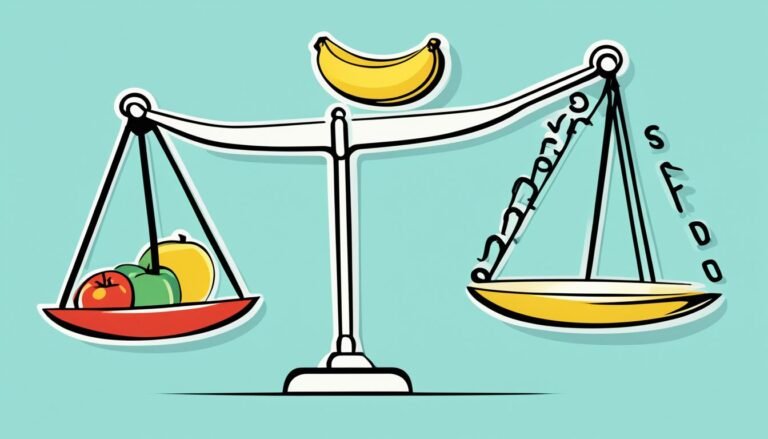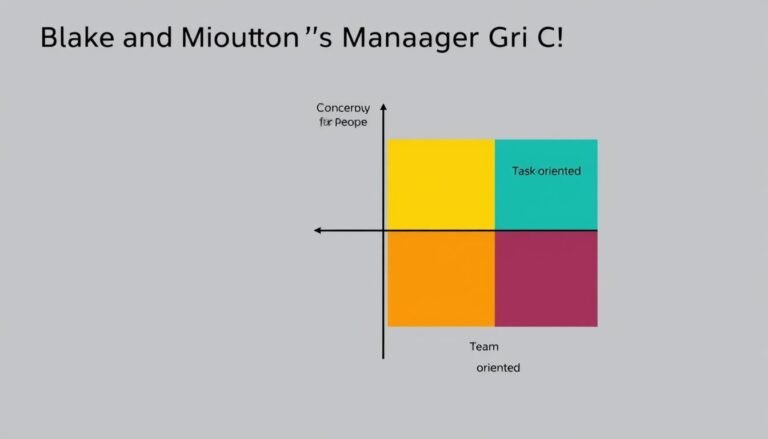Maslow’s Hierarchy of Needs: A Complete Guide
Ever wondered why some people reach their dreams easily, while others find it hard to get by? The key might be in Maslow’s Hierarchy of Needs, a key idea in psychology by Abraham Maslow in 1943. This theory shows how our needs are arranged in a specific order. It helps us see how our needs affect our drive and our connections with others.
From basic survival to reaching our full potential, this guide will walk you through each level of the hierarchy. You’ll see how these needs shape our motivations and our relationships.
Key Takeaways
- Maslow’s hierarchy consists of five tiers: physiological, safety, love/belonging, esteem, and self-actualization.
- Physiological needs are critical for survival, including essentials like food and shelter.
- Safety needs focus on desires for order, security, and predictability in life.
- Love and belongingness needs are about building relationships and feeling connected.
- Self-actualization pertains to realizing one’s full potential and achieving personal growth.
- Maslow categorized needs into deficiency needs (D-needs) and growth needs (B-needs).
- The hierarchy can fluctuate based on life experiences, impacting motivation levels.
Understanding Maslow’s Hierarchy of Needs
Maslow’s Hierarchy of Needs is a key idea in understanding human motivation. It’s a five-tier model that shows how people prioritize their needs. The idea is that you need to meet lower-level needs before moving on to higher ones. These needs cover both basic and complex parts of life, shaping our actions and goals.
Definition of Maslow’s Hierarchy of Needs
The hierarchy has five main levels: physiological, safety, love and belonging, esteem, and self-actualization needs. At the base are physiological needs, like breathing, eating, and having a home. Safety needs come next, focusing on feeling secure and protected, including having a steady job and income.
Historical Background and Development
Maslow’s theory came about in the mid-20th century, influenced by humanistic psychology and anthropology. He focused on healthy individuals, looking into what drives them to reach their full potential. By the 1960s, his theory became very important, affecting many fields, including psychology and business.
Importance in Psychological Theory
Maslow’s Hierarchy of Needs is very important in understanding human motivation. It helps us see why people do what they do in different areas, like work, school, and personal growth. The idea is that meeting lower-level needs boosts motivation for higher-level growth, affecting both individuals and groups.
| Level | Description | Examples |
|---|---|---|
| Physiological Needs | The most basic needs for physical survival. | Air, food, water, shelter, sleep. |
| Safety Needs | The need for security and protection. | Job security, health insurance, stable income. |
| Love and Belonging Needs | Needs related to social interactions and relationships. | Friendships, family connections, community. |
| Esteem Needs | The desire for respect and recognition. | Achievements, self-esteem, reputation. |
| Self-Actualization Needs | The realization of one’s potential and personal growth. | Creative pursuits, personal development, fulfilling dreams. |
The Five Levels of Maslow’s Hierarchy of Needs
Abraham Maslow’s theory explains human motivation through five levels. Each level is important for understanding what motivates people at different life stages. The levels build on each other, showing the need to meet lower-level needs before moving up.
Physiological Needs
At the base of Maslow’s hierarchy are physiological needs. These are the must-haves for living, like food, water, and shelter. Without these, people can’t think about other needs. It’s key to meet these needs to move up the hierarchy.
Safety Needs
After getting basic needs met, safety needs come into focus. This level is about wanting to be safe, protected, and stable. People aim for a life that’s predictable and secure. Meeting these needs helps them feel at ease, letting them focus on relationships and belonging.
Love and Belonging Needs
Next, love and belonging needs take center stage. People look for friends, connections, and emotional support. This level shows how important it is to be part of a community. It’s about feeling accepted and a sense of belonging.
Esteem Needs
Esteem needs come fourth, focusing on feeling good about oneself and getting respect from others. People want to be seen as valuable and appreciated. Meeting these needs builds confidence and pushes people to achieve more in life.
Self-Actualization Needs
Self-actualization is the top level of Maslow’s hierarchy. It’s about reaching one’s full potential and using unique talents. This level is about growing and improving oneself. Only a few make it here, but understanding it helps us see what drives us.
Deficiency Needs vs Growth Needs
Maslow’s hierarchy of needs divides into two main parts: deficiency and growth needs. These concepts help us understand human behavior and growth. Deficiency needs come from not having something, while growth needs are about getting better and feeling fulfilled.
Understanding Deficiency Needs
Deficiency needs are the basic levels in Maslow’s hierarchy. They include physiological, safety, love and belonging, and esteem needs. These are key for living and feeling good.
- Physiological needs: Things we need to live, like food, water, and a place to stay.
- Safety needs: Feeling secure, having enough money, and being healthy.
- Love and belonging needs: Being close to others, having family and friends, and feeling part of a group.
- Esteem needs: Wanting respect, being recognized, and feeling good about what we do.
Not meeting these needs can make it hard to grow and be happy.
The Role of Growth Needs
Growth needs are the higher levels of the hierarchy, focusing on self-actualization. They’re about reaching our full potential, not just filling gaps. Everyone has growth needs, but reaching self-actualization takes meeting deficiency needs first.
Self-actualization means becoming the best version of ourselves. It involves being creative, true to ourselves, and having a purpose in life.
Behavioral Motivations and Implications
Knowing about deficiency and growth needs helps us understand why we do things. When we’re missing something basic, we focus on getting it. Once we have what we need, we might look for more growth.
This insight helps us see why people act the way they do, make choices, and connect with others.
| Category | Description | Examples |
|---|---|---|
| Deficiency Needs | Needs arising from deprivation that must be satisfied for survival and well-being. | Food, shelter, safety, love, esteem. |
| Growth Needs | Needs related to personal growth and self-fulfillment. | Self-actualization, creativity, personal excellence. |
Applications of Maslow’s Hierarchy of Needs
Maslow’s Hierarchy of Needs is important in many areas. It affects workplace motivation, educational psychology, and counseling techniques. Experts use it to understand human behavior and make things better.
Impact on Workplace Motivation
At work, Maslow’s Hierarchy helps boost motivation. Employers meet their team’s basic needs like salary and job security. This lets employees concentrate on their jobs without worrying about their needs.
Building a sense of belonging through team activities also helps. It makes everyone work better together, raising motivation.
Influence on Education and Learning
Education is also shaped by Maslow’s Hierarchy. Teachers look at students’ needs, from basic to self-actualization. A safe classroom is key for learning.
Regular breaks, good lighting, and social time help students grow fully. Teachers who praise students’ achievements boost their confidence and motivation.
Utilization in Counseling and Therapy
Counseling benefits from Maslow’s Hierarchy too. Counselors find and meet needs that affect well-being. They guide people towards self-actualization by first meeting basic needs.
This approach leads to better personal growth and mental health. It makes therapy more effective for each person.
Conclusion
Maslow’s Hierarchy of Needs is key to understanding what drives us and keeps us happy. It shows that we need basic things like food and safety before we can think about feeling happy or fulfilled. This model helps us see how different things can change what motivates us.
This idea has spread far beyond just psychology. It helps in education and how people work together in offices. Companies use it to make sure their workers are happy and engaged. By doing this, they create a better place to work for everyone.
Even though some say it’s too simple or doesn’t fit everyone, Maslow’s theory is still important. Studies now suggest that our needs might not be as clear-cut as the hierarchy makes them out to be. They might blend together in complex ways. As we learn more, we’ll see how Maslow’s ideas can help us grow and be happier together.
Source Links
- Maslow’s Hierarchy of Needs
- A Guide to Maslow’s Hierarchy of Needs (Extended Version)
- Maslow’s Hierarchy of Needs
- What is Maslow’s Hierarchy of Needs
- Maslow’s Hierarchy of Needs: A Tool for Effective Business Management
- What are the 5 levels of Maslow’s hierarchy of needs?
- What Is Maslow’s Hierarchy of Needs? The 5 Levels, Explained
- Deficiency-Growth Theory: Maslow’s Hierarchy of Needs
- How Maslow’s Hierarchy of Needs Explains Human Motivation
- Maslow’s hierarchy of needs pyramid: Uses and criticism
- How Maslow’s Hierarchy of Needs can be applied in teaching
- Maslow’s Hierarchy of Needs: A Simple Summary – The World of Work Project
- Is Maslow’s Famous Hierarchy of Needs Still Relevant Today?
- Maslows Hierarchy of Needs Theory







